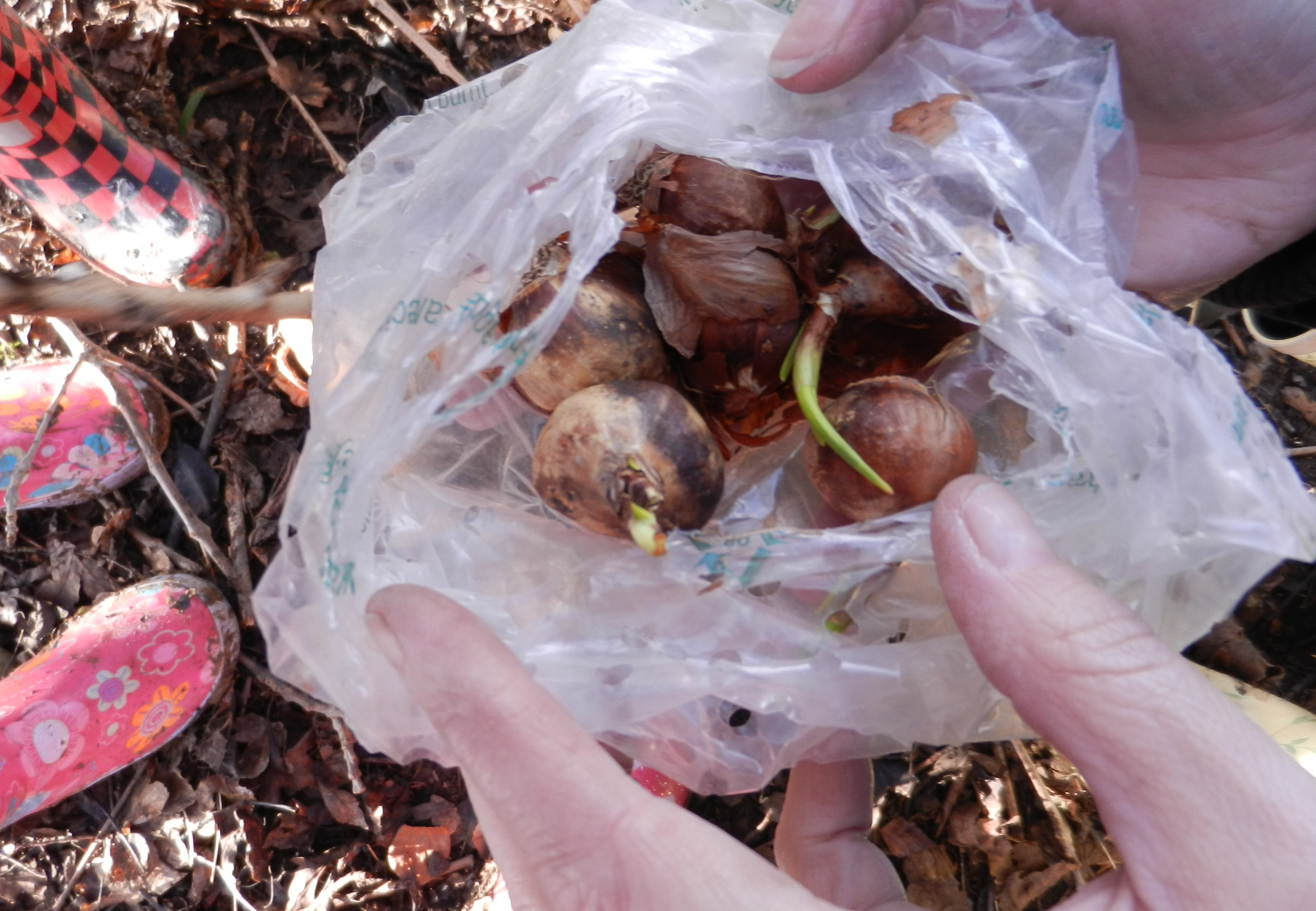
Winter, when children are probably not spending quite so much time outdoors and the garden is gently dormant, is a good time to take stock and plan a brilliant outdoor play space for the coming year.
1. START A COMPOST HEAP
Compost has ‘heaps’ of benefits and can be as ambitious or as neat and tidy as your space dictates. Winter is a good time to start a compost heap, because while garden cuttings and raw food waste require warmer weather to decompose, in the meantime, it will be colonised by worms and possibly overwintering creatures such as slow worms and mice.
A simple compost container can be created using old pallets, a plastic dustbin or just a corner of the garden, and by summer the first compost will be available to boost your strawberry or tomato plants.
2. PLANT BULBS AND SEEDS
Autumn is the perfect time to plant out spring bulbs, but some, as well as other bulb species that flower over winter, will accept winter planting.
Wildflower seeds can also be planted in winter, and seedballs are great fun for young children to make and sow. You’ll need potting compost, packets of mixed wildflower seeds, some clay powder (from a garden centre) and water.
Mix the compost and clay powder and add sufficient water to make a sticky ‘dough’. Children should roll a small lump of the mixture between their palms to make a ball, then add a pinch of seeds. Re-roll the ball to incorporate the seeds, then dry them on a sunny windowsill. Seedballs can be planted into soft soil using a stick to make a hole about the length of a child’s thumb; push the dirt back over and wait for spring!

3. REPAINT
Painting fences or chalkboards is a task that can be neglected, but this year why not involve the children? Painted woodwork lasts much longer if it is first sanded down, and this is a great job for young hands to help with. Remove flaking paint with small sanding blocks (from any DIY store or pound shop), which are easy to grasp.
Encourage the children to grip the block and to rub up and down on the paint, as well as side to side and in and out of any crevices. If it is not feasible for children to help with the painting, provide paintbrushes and coloured water so they can paint the walls and paving instead. Sanding and painting are physically active tasks and offer an excellent way to develop arm and shoulder muscles.
4. PRUNE
In the dormant season, when plants are resting, it is safe to prune and shape them to suit the setting’s needs. In particular, invasive plants such as buddleia can be cut right down to keep them in check, and trees can have lower limbs removed.
Green cuttings can go into your compost heap; save woody prunings for a bonfire. Before you do that, though, let children play with the clippings, especially those longer branches, which are great for den and ‘nest’ building.
5. FEED THE BIRDS (AND BEASTS)
As well as the birds, feed the small mammals that make a home in your garden, such as hedgehogs, voles and wood mice. A daily feeding programme will enable them to overwinter in your garden and be ready to reappear in spring – when they will be more visible for children to enjoy.
If you don’t already have bird feeders and hidey-holes for small mammals, they can be made easily by children (search online for ‘DIY bird feeders’), or picked up cheaply from supermarkets and pound shops. If you don’t have suitable trees, suspend bird feeders from play equipment, fence posts or eaves.
Try to place them where children can watch birds feeding. Allow grass to grow long, and create piles of wood and shrub clippings in quiet spaces. In spring, your neighbourhood birds and beasts should reward your winter efforts with beautiful birdsong and making homes for their own new families.
And another thing…
For advice on ‘overwintering’, visit:









